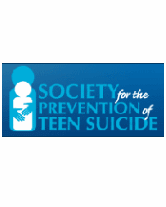Teen Suicide Prevention: Warning Signs
Students at a higher risk often exhibit warning signs:
- Threatening suicide.
- Looking for access to means.
- Talking or writing about death, dying, suicide.
- Made a previous attempt that was serious enough to require hospitalization.
These are some basic guidelines that simply reinforce good classroom practice:
- Pay attention to who your students are, not just how they perform academically.
- Notice their appearance.
- Observe their social skills/relationships.
- Monitor any behavior changes.
Warning signs are what usually precipitate a referral for further evaluation of risk by a mental health professional. The word "FACTS" provides a helpful acrostic for identifying the suicide warning signs:
Feelings
Actions
Changes
Threats
Situations
F stands for feelings. Hopelessness, worthlessness, despair, emptiness, feeling anxious or trapped — these are examples of feelings that should be cause for concern.
A indicates actions. Trying to get access to a gun or pills, reckless behaviors, increasing drug or alcohol use, and fighting.
C indicates changes. It is important to look for changes from the student's previous attitude, moods, or behaviors. Students who were active may become withdrawn, quit athletic teams, stop paying attention to personal appearance, daydream or fall asleep in the classroom, or simply cut class. The key is to concentrate on recognizing changes from previous behaviors.
T represents threats. These can be specific, such as verbal statements of intent ("I'm tired of living" or "I'm thinking of killing myself"), or worrisome innuendos in writing or other class assignments. Whether specific or vague, the student is thinking about death or suicide, which escalates the level of concern.
S refers to situations that may serve as triggers for the suicide. Getting into trouble at home, in school, or with legal authorities; personal loss of relationships, opportunities, self-esteem, or hope for the future; or any type of life change for which the student feels overwhelmed or unprepared — such as moving, or the transition after high-school graduation. The most worrisome time is between the occurrence of the triggering situation and its resolution — in that period of uncertainty before the outcome is known.













